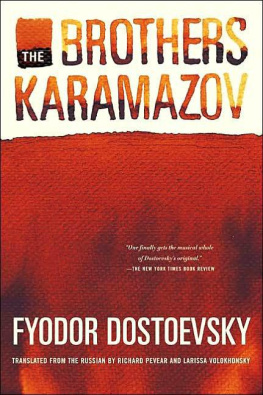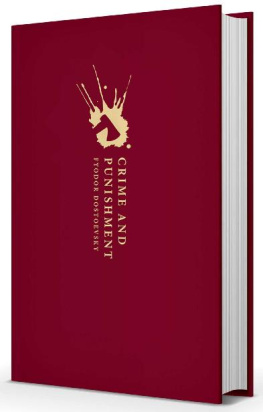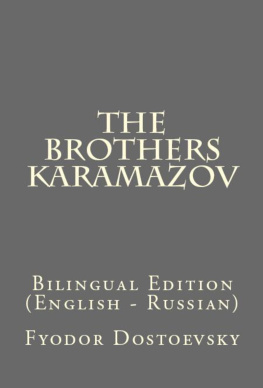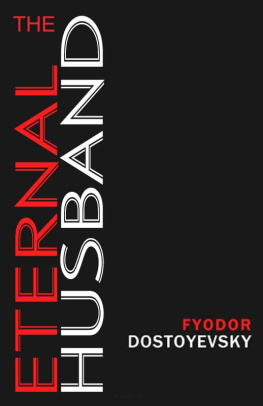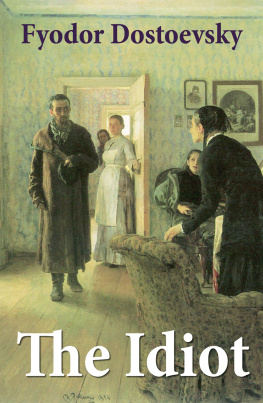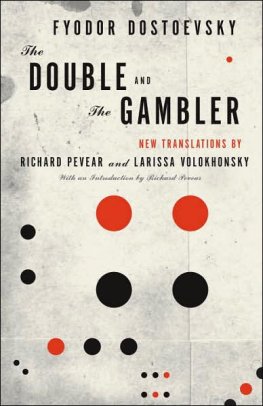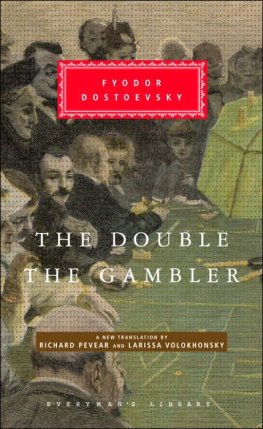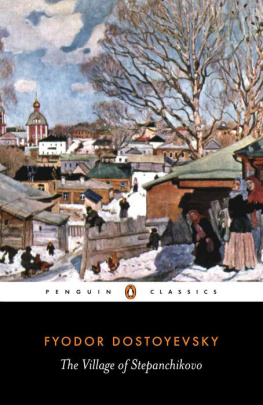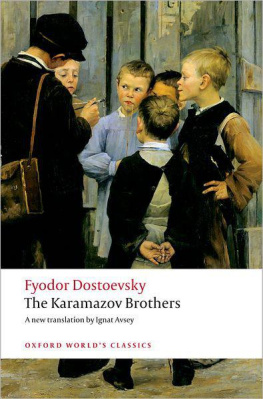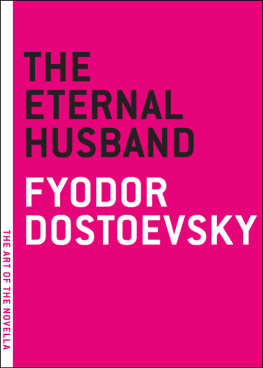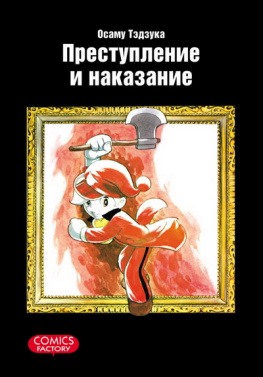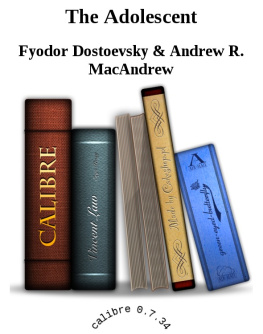Fyodor Dostoevsky - The Adolescent (Vintage Classics)
Here you can read online Fyodor Dostoevsky - The Adolescent (Vintage Classics) full text of the book (entire story) in english for free. Download pdf and epub, get meaning, cover and reviews about this ebook. year: 2007, publisher: Vintage, genre: Detective and thriller. Description of the work, (preface) as well as reviews are available. Best literature library LitArk.com created for fans of good reading and offers a wide selection of genres:
Romance novel
Science fiction
Adventure
Detective
Science
History
Home and family
Prose
Art
Politics
Computer
Non-fiction
Religion
Business
Children
Humor
Choose a favorite category and find really read worthwhile books. Enjoy immersion in the world of imagination, feel the emotions of the characters or learn something new for yourself, make an fascinating discovery.

- Book:The Adolescent (Vintage Classics)
- Author:
- Publisher:Vintage
- Genre:
- Year:2007
- Rating:4 / 5
- Favourites:Add to favourites
- Your mark:
- 80
- 1
- 2
- 3
- 4
- 5
The Adolescent (Vintage Classics): summary, description and annotation
We offer to read an annotation, description, summary or preface (depends on what the author of the book "The Adolescent (Vintage Classics)" wrote himself). If you haven't found the necessary information about the book — write in the comments, we will try to find it.
The Adolescent (Vintage Classics) — read online for free the complete book (whole text) full work
Below is the text of the book, divided by pages. System saving the place of the last page read, allows you to conveniently read the book "The Adolescent (Vintage Classics)" online for free, without having to search again every time where you left off. Put a bookmark, and you can go to the page where you finished reading at any time.
Font size:
Interval:
Bookmark:
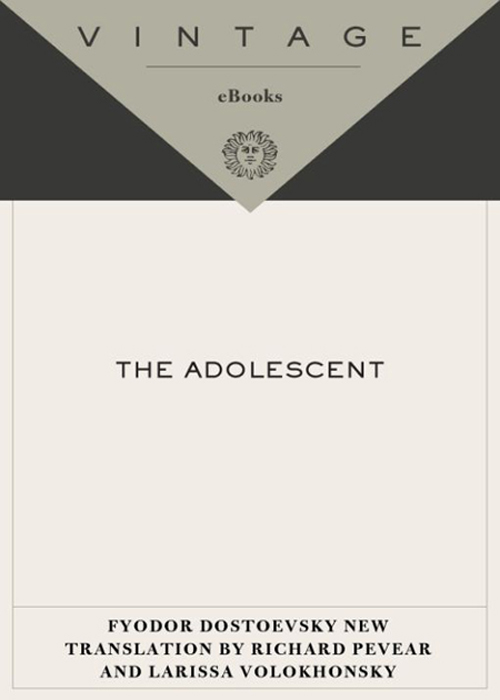
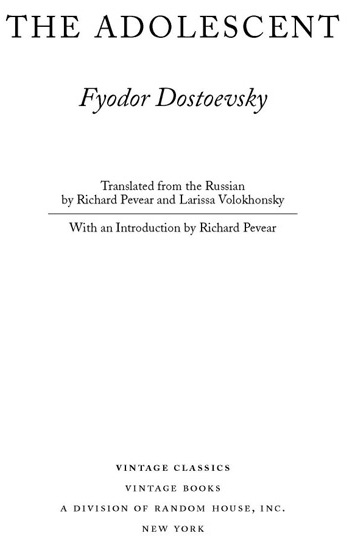
Table of Contents
TRANSLATORS NOTES
LIST OF PRINCIPAL CHARACTERS
Russian names are composed of first name, patronymic (from the fathers first name), and family name. Formal address requires the use of first name and patronymic; diminutives (Arkasha, Lizochka, Sonya) are commonly used among family and intimate friends. The following is a list of the principal characters in The Adolescent, with diminutives and epithets. In Russian pronunciation, the stressed vowel is always long and unstressed vowels are very short.
Dolgorky, Arkdy Makrovich (Arksha, Arkshenka, Arkshka): the adolescent, author of the novel.
, Makr Ivnovich: his legal father.
, Sfya Andrevna (Snya, Sophie): his mother.
, Lizavta Makrovna (Lza, Lzochka, Lizk): his sister.
Verslov, Andri Petrvich: natural father of Arkady and Liza.
, nna Andrevna: Versilovs daughter by his first marriage.
, Andri Andrevich: the kammerjunker, Versilovs son by his first marriage.
Akhmkov, Katerna Nikolevna (Ktya): young widow of General Akhmakov.
, Ldia (no patronymic): her stepdaughter. Soklsky, Prince Nikoli Ivnovich: the old prince, Mme. Akhmakovs father.
Prutkv, Tatyna Pvlovna: the aunt, friend of the Versilov family.
Soklsky, Prince Sergi Petrvich (Seryzha): the young prince, no relation to Prince Nikolai Ivanovich.
Lambrt, Maurce: schoolfriend of Arkadys, a Frenchman.
Verdigne, Alphonsne de (Alphonsina, Alphonsinka): Lamberts girlfriend.
Drya Onsimovna (no family name; her name changes to Nastsya Egrovna in Part Three): mother of the young suicide lya (diminutive of lga).
Vsin, Grsha (diminutive of Grigry; no patronymic): friend of Arkadys.
Stebelkv (no first name or patronymic): Vasins stepfather. Pytr Ippoltovich (no last name): Arkadys landlord. Nikoli Semynovich (no last name): Arkadys tutor in Moscow.
, Mrya Ivnovna: Nikolai Semyonovichs wife. Trishtov, Ptya [i.e., Pytr] (no patronymic): the pretty boy. Andrev, Nikoli Semynovich: le grand dadais.
Semyn Sdorovich (Sdorych; no last name): the pockmarked one.
A NOTE ON THE TOPOGRAPHY OF ST. PETERSBURG
The city was founded in 1703 by a decree of the emperor Peter the Great and built on the delta of the river Neva, which divides into three main branches the Big Neva, the Little Neva, and the Nevka as it flows into the Gulf of Finland. On the left bank of the Neva is the city center, where the Winter Palace, the Senate, the Admiralty, the Summer Garden, the theaters, and the main thoroughfares such as Nevsky Prospect, Bolshaya Millionnaya, and Bolshaya Morskaya are located. On the right bank of the Neva before it divides is the area known as the Vyborg side; the right bank between the Nevka and the Little Neva is known as the Petersburg side, where the Peter and Paul Fortress, the oldest structure of the city, stands; between the Little Neva and the Big Neva is Vassilievsky Island. To the south, some fifteen miles from the city, is the suburb of Tsarskoe Selo, where the empress Catherine the Great built an imposing palace and many of the gentry had summer houses.
TRANSLATIONS OF DOSTOEVSKY
BY PEVEAR AND VOLOKHONSKY
The Adolescent (2003)
The Idiot (2002)
Demons (1994)
Notes from Underground (1993)
Crime and Punishment (1992)
The Brothers Karamazov (1990)
INTRODUCTION
In the early 1870s, the radical satirist M. E. Saltykov-Shchedrin declared that in Russia the family novel was dead: The family, that warm and cosy element... which once gave the novel its content, has vanished from sight... The novel of contemporary man finds its resolution in the street, on the public way, anywhere but in the home. In 1875, however, two novels began to appear serially in rival journals: Tolstoys Anna Karenina in the conservative Russian Messenger, and Dostoevskys The Adolescent in the populist Notes of the Fatherland. Though they have nothing else in common, both are family novels in excelsis. Their appearance at that time suggests that, far from having vanished from sight, the family was still the mirror of Russian social life, and the fate of the family was a key to Russias destiny.
Tolstoy defied the radicals by portraying the ordered life of his own class, the hereditary aristocracy, and the tragedy of its disruption that is, by looking back at a world which, as Dostoevsky saw, had become a fantasy. But you know, Dostoevsky wrote to his friend Apollon Maikov, this is all landowners literature. It has said everything it had to say (magnificently in Leo Tolstoy). But this word, a landowners in the highest degree, was the last. A new word, replacing the landowners, does not exist yet. In The Adolescent, which he conceived in part as an answer to Tolstoy, Dostoevsky found that new word, portraying what he calls the accidental family of his time, the reality behind Tolstoys grand mirage. In Dostoevsky, His Life and Work, Konstantin Mochulsky draws the ultimate conclusion about the family chronicle as Dostoevsky conceived it. The main theme of The Adolescent, he writes, is the problem of communion: man is determined by his character, but his fate is defined in freedom, in spite of hischaracter. The influence of one personality on another is limitless; the roots of human interaction go down into metaphysical depths; the violation of this organic collectivity is reflected in social upheavals and political catastrophes. What Saltykov-Shchedrin saw taking place on the public way had its cause in what was taking place in the fundamental unity of the family, which could still serve as the image of Russian society in its inner, spiritual dimension.
The Adolescent is the fourth of the five major novels that Dostoevsky wrote after the turning point of Notes from Underground (1864). These novels in their sequence represent an ascending movement from underground towards the cold, clear light at the end of The Brothers Karamazov. The Adolescent is the next-to-last step in this ascent. And yet it is the least known of the five novels, the least discussed in the vast critical literature on Dostoevsky, simply omitted, for instance, from such major readings of his work as Vyacheslav Ivanovs Freedomand the Tragic Life, Romano Guardinis Der Mensch und der Glaube (Man and Fate), and the essays of the philosopher Lev Shestov. In The Mantle of the Prophet, the final volume of his critical biography of Dostoevsky, Joseph Frank refers to The Adolescent rather dismissively as a curious hybrid of a novel and something of an anomaly among the great creations of Dostoevskys last period. He finds that it lacks the collision of conflicting moral-spiritual absolutes that invariably inspired his best work. Edward Wasiolek, editor and annotator of The Notebooks forA Raw Youth, simply calls it a failure.
It is true that The Adolescent lacks the dark intensity of Crime and Punishment, The Idiot, and Demons, the mephitic atmosphere, the whiff of brimstone that many readers consider Dostoevskys essence. It is very different in tone from the preceding novels. But that difference is a sign of its special place in the unity of Dostoevskys later work. The Adolescent is up to something else.
The distinctive tone of the novel is set by the adolescent narrator himself, that is, by the fact of his being an adolescent, speaking in the first person and writing as an amateur. Dostoevskys notebooks show how carefully he weighed the question of point of view, and with what effect in mind. In September 1874, during the early stages of planning the novel, he notes: In
Next pageFont size:
Interval:
Bookmark:
Similar books «The Adolescent (Vintage Classics)»
Look at similar books to The Adolescent (Vintage Classics). We have selected literature similar in name and meaning in the hope of providing readers with more options to find new, interesting, not yet read works.
Discussion, reviews of the book The Adolescent (Vintage Classics) and just readers' own opinions. Leave your comments, write what you think about the work, its meaning or the main characters. Specify what exactly you liked and what you didn't like, and why you think so.

